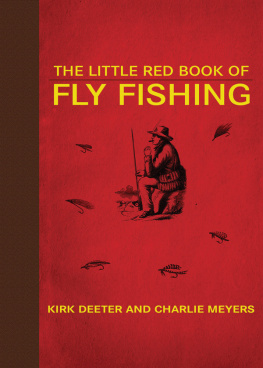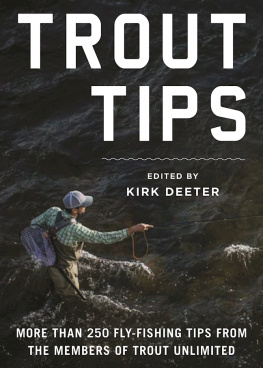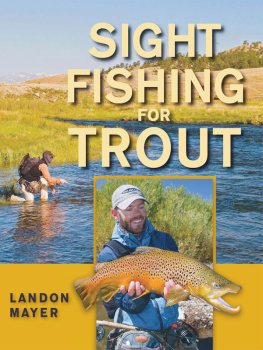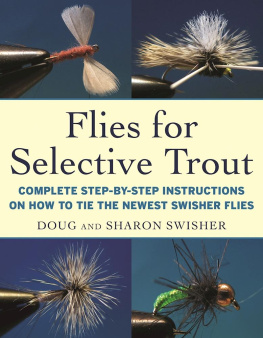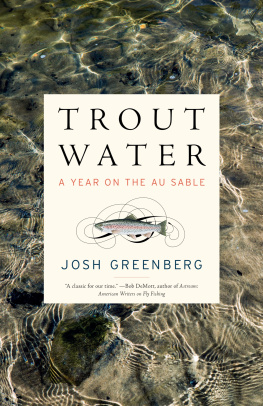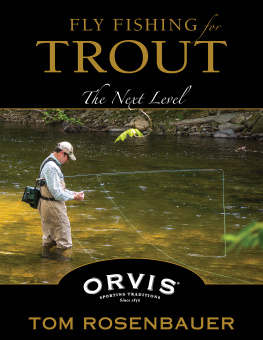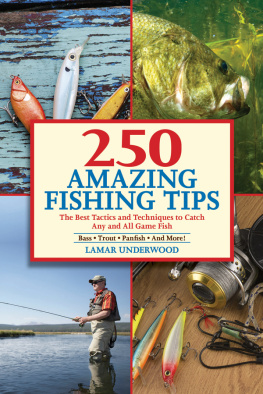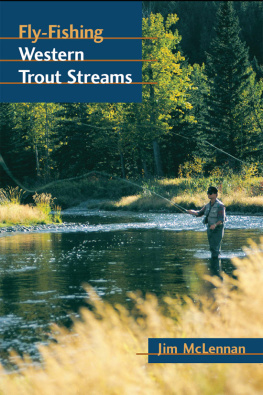W ed like to acknowledge Jay Cassell for taking this project under his expert editing wing; Tim Romano for his continued partnership and outstanding photographic contributions; our colleagues at Field & Stream and The Denver Post; and, of course, our families and fly-fishing friends for their steadfast support.
Introduction

H ow this book came to be ...
Ive only known Charlie Meyers since 2002. In that short time, hes become one of my best friends and my outdoor writing mentor.
Our first contact was a cold call. Id moved to Colorado from Philadelphia, had cowritten a book on fly fishing guides (called Castwork), and then found myself in the unenviable position of being an author-turnedself-publicist. With great trepidation, I picked up the phone and dialed Charlie at his Denver Post office, intending to beg for some attention to my book. I knew Charlie Meyers was an outdoors writing icon, but it would be a few more years before Id learn that hed been writing fishing and hunting stories for the Post (in arguably the most outdoorsy metro market in America) since 1966, the year I was born.
To my surprise, Charlie picked up the phone, and said, Yes, I have your book right here. I think its interesting. We should go fishing together and talk about it.
And we did. Not long after that, he wrote a nice review of my book in the Post. We stayed in touch. We fished some more. I wrote another book. And for some reason only Charlie might explain, he saw fit to take me under his wing and teach me about outdoor writing, and fly-fishing writing in particular. We had regular lunch dates and fished together when we could. Sometimes I was the prop figure in stories hed write for the Post. All along the way, at every stop, he gave advice. And I listened.
All of this eventually led me to an editor-at-large position with Field & Stream magazine, the worlds leading outdoors publication. In time, Charlie and I found ourselves being invited to cover the same events and stories; he for the Post, me for Field & Stream.
There was one special moment when were wheeling home toward Denver after fishing the South Fork of the Snake River in Idaho. It was the middle of an August night. I was driving Charlies Jeep on I-80 outside of Laramie, Wyoming, bleary-eyed and exhausted. Charlie was sleeping in the passenger seat. I reached into the glove compartment to find a cassette, plugged it into the tape deck, and cranked the volume to keep myself awake. Buffalo Springfield... Bluebird. Rolling through the dry wash, I sang the refrain... Do you think, she loves you... And then, Charlie chimed in from his apparent slumber, in perfect harmony... Do you think, at all?
We decided to write a book togethera book that, like the music, might resonate among different generations. The book would be about fly fishing, the passion that fuels both our souls. (We both also write about bird hunting, big game hunting, and other types of fishing, but when all is said and done, the essential passion for both of us is fly fishing.)
But what did we have to offer? Yes, we both had stories we could tell about our respective adventures, fishing across the country or around the world. The more we talked about the book, though, the more we realized that what mattered most were the tips and tricks wed learned over the years, things that actually might help people catch fish on the fly. With Charlies insights from having traveled the world and rubbed shoulders with icons of the sport like Lefty Kreh and Lee Wulff, and with the many ideas Id gotten from my wild Field & Stream adventures, fishing with top guides from Alaska to Tierra del Fuego, we figured we could put together a book like nothing else on the market.
An important aspect of being a fly-fishing writer is that you must live it and do it to be successful. To be a great beat writer covering the National Football League, you really neednt have worn the pads or seen game action. To be a successful political reporter, you need not have actually run for political office. But to be a successful outdoors writer, its imperative that you not only talk the talk, but also walk the walk.
Both Charlie and I believe that too many self-professed experts have made too much money complicating this sport. In reality, fly fishing is a lot simpler than many people think. You dont have to know the Latin names of every insect, nor do you need to make 70-foot casts, in order to enjoy yourself. The true path to enjoying fly fishing lies in every anglers spirit.
Years ago, I fancied myself a golfer, and I subscribed to the golf magazines, took lessons, and did everything I could to knock a few strokes off my game. Ultimately, I found Harvey Penicks Little Red Book on golf to be a great resource. Its plainspoken advice, minus the swing physics and complicated theories, took strokes off my handicap. Its a sensible, no-nonsense book.

